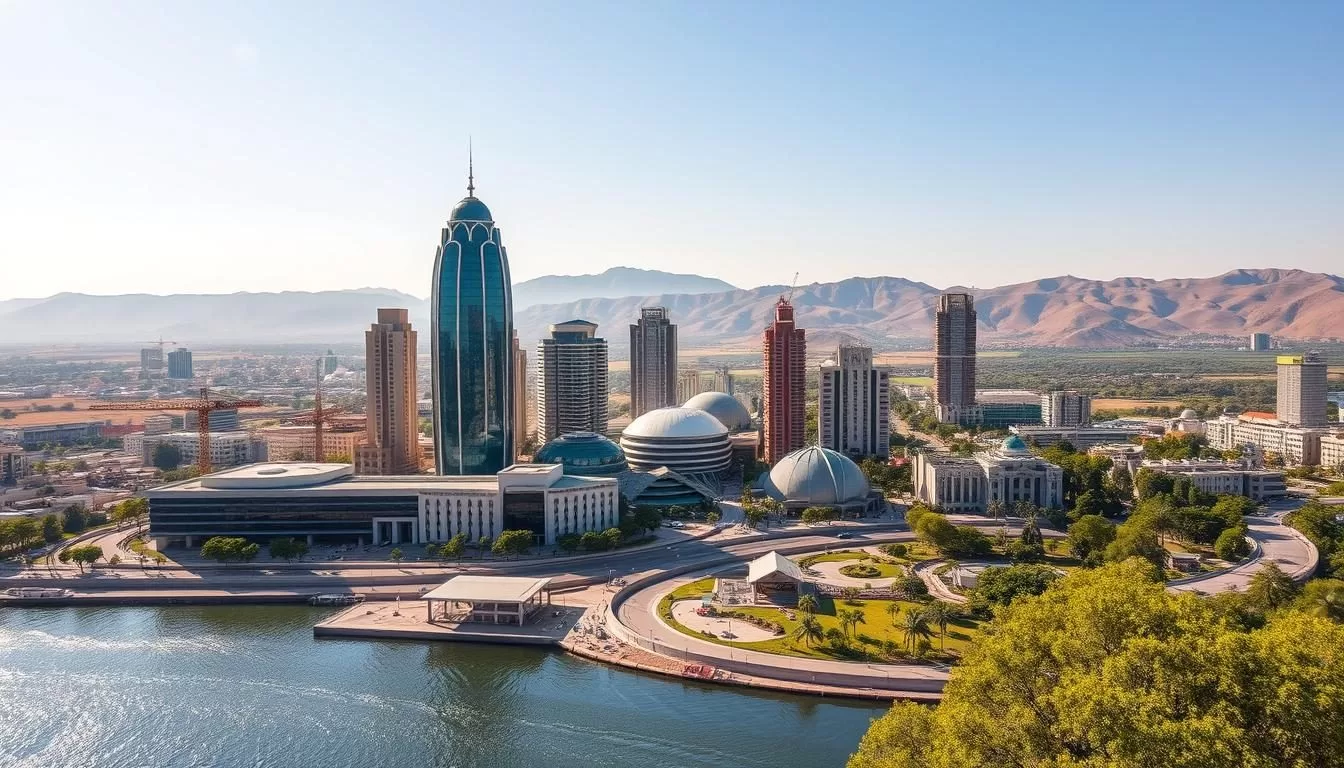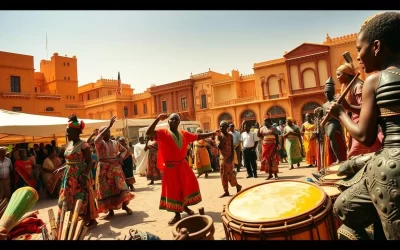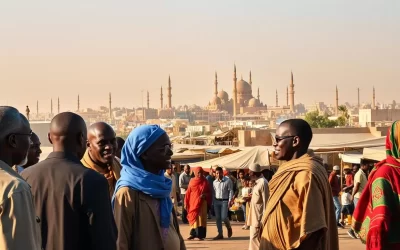✓ Accommodations✓ Flights✓ Rental Cars
Are you ready to explore a destination that seamlessly blends history, culture, and natural beauty? Located at the confluence of the Blue and White Nile rivers, Khartoum is a city that boasts one of Africa’s most distinctive urban landscapes.
As the capital of Sudan, Khartoum is a treasure trove of cultural experiences, culinary adventures, and exciting activities waiting to be discovered. With its rich history and diverse cultural influences, this city is a must-visit for intrepid travelers.
As you visit Khartoum, you’ll be captivated by the city’s unique charm, welcoming locals, and wealth of attractions. Get ready to immerse yourself in the local culture, savor the flavors of Sudanese food, and explore the vibrant market scenes.
Discovering Khartoum: Sudan’s Vibrant Capital
As you explore Khartoum, you’ll discover a city that embodies the vibrant spirit of Sudan. Khartoum is an amazingly vibrant and exciting city, full of life and activity.
The City of Three Towns
Khartoum is often referred to as the “City of Three Towns” due to its unique geographical composition, which includes Khartoum, Omdurman, and Khartoum North. This tripartite structure is a result of the city’s historical development around the confluence of the Nile rivers.
The Magnificent Confluence of the Niles

The confluence of the Blue and White Nile, known as al-Mogran, is a breathtaking natural spectacle. Here, the two rivers meet to form the main Nile, creating one of Africa’s most significant geographical features. You can witness the striking visual contrast between the two rivers at their confluence – the Blue Nile carrying dark sediment from the Ethiopian highlands and the White Nile appearing lighter in color.
The confluence has significant historical and cultural importance to Sudanese identity and has been a focal point for settlement for centuries. You can appreciate the best viewpoints from the bridge connecting Khartoum and Omdurman or from boat tours on the river. Understanding the ecological importance of this river system to Sudan’s agriculture, economy, and way of life is crucial, as it sustains communities along its banks for millennia.
Top Historical and Cultural Attractions in Khartoum, Sudan
As you explore Khartoum, you’ll discover a rich tapestry of historical and cultural attractions that showcase the city’s unique heritage. The city’s strategic location at the confluence of the White Nile and Blue Nile rivers has made it a melting pot of cultures, evident in its numerous historical sites and cultural experiences.
National Museum of Sudan
The National Museum of Sudan is a must-visit attraction, housing a vast collection of artifacts that tell the story of Sudan’s history and culture. You can explore exhibits on the ancient kingdoms of Kush and Nubia, as well as artifacts from the country’s more recent past.

Ethnographic Museum
The Ethnographic Museum offers insights into the diverse cultures and traditions of Sudan’s various ethnic groups. You can explore exhibits featuring traditional clothing, jewelry, and household items, gaining a deeper understanding of the daily lives and customs of the Sudanese people.

Omdurman and Its Historic Sites
Omdurman, located on the west bank of the Nile, is a historic city with a rich cultural heritage. You can visit the Khalifa House Museum, the Mahdi’s Tomb, and other significant places that highlight the city’s importance in Sudanese history.
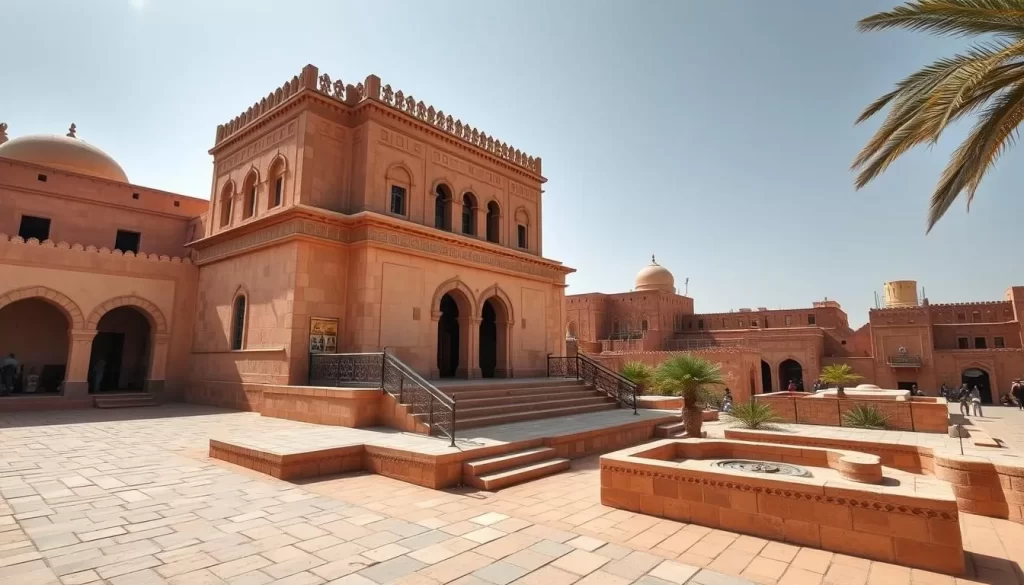
Tuti Island: A Green Oasis
Tuti Island, situated at the confluence of the Blue and White Nile rivers, is a peaceful agricultural oasis that offers a stark contrast to Khartoum’s urban environment. You can enjoy various activities such as walking through the island’s traditional village, witnessing traditional farming practices, and taking in the spectacular views of the Nile and Khartoum’s skyline.

In conclusion, Khartoum’s historical and cultural attractions offer a unique glimpse into the city’s rich heritage, shaped by its strategic location at the confluence of the rivers. From the National Museum of Sudan to the serene Tuti Island, there’s a wealth of cultural and historical experiences waiting to be discovered in this vibrant city.
Unmissable Cultural Experiences in Khartoum
Immerse yourself in Khartoum’s rich cultural tapestry, where every visit reveals a new facet of Sudanese heritage. The city offers a variety of cultural experiences that are as enriching as they are unforgettable.
Friday Sufi Dancing at Hamed al-Nil Tomb

Every Friday, the Hamed al-Nil Tomb comes alive with the rhythmic movements of Sufi dancers. This spiritual activity is a mesmerizing display of devotion and culture.
Nuba Wrestling

Nuba wrestling is a traditional sport that showcases strength, agility, and cultural pride. Witnessing a match provides a unique insight into Sudanese way of life.
Exploring Khartoum’s Markets
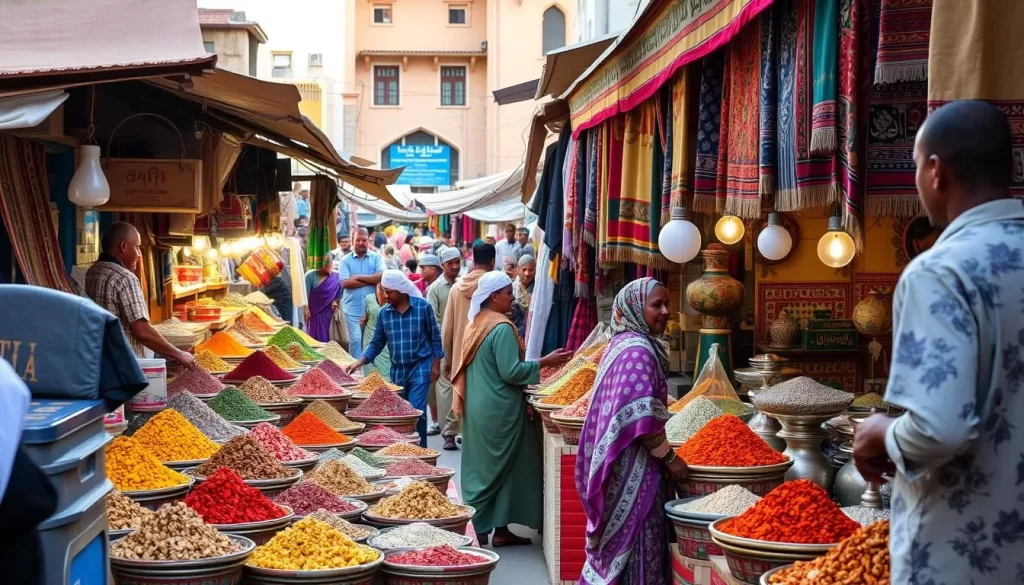
Khartoum’s markets are a sensory delight, offering a variety of goods including handcrafted jewelry, leather goods, and an array of spices. Navigate the labyrinthine alleys of Omdurman Souk, or explore the more manageable Khartoum Souk (Arab Market) for an authentic market experience. Don’t forget to sample street food from vendors, offering a delicious taste of Sudanese cuisine.
For a more modern shopping experience, visit Afra Mall or Al-Waha Mall, where you can find international brands in an air-conditioned comfort. Whether you’re looking for a guided tour or exploring on your own, Khartoum’s markets and shopping centers offer a variety of activities to suit every interest.
Khartoum, Sudan: Best Things to Do for Food Lovers
Khartoum, the capital of Sudan, is a culinary gem waiting to be explored by food enthusiasts. As you wander through the city, you’ll discover a rich tapestry of flavors and dishes that reflect its cultural heritage.
Must-Try Sudanese Dishes
Sudanese cuisine is a delightful blend of African, Arab, and Mediterranean flavors. You should try karkor, a hearty stew made with meat or fish, or tamiya, the Sudanese version of falafel, which is flavored with local spices and herbs.
Another must-try is shawarma, thinly sliced meat served in a flatbread with vegetables and tahini sauce. Don’t forget to sample some of the local street food, such as falafel sandwiches and sweet tea, which are both affordable and delicious.
Best Restaurants and Cafés
Khartoum is home to a variety of restaurants and cafés that serve both traditional Sudanese cuisine and international dishes. When searching for the best restaurants in Khartoum, look for places that offer a blend of local flavors and modern culinary techniques.
You can find excellent dining experiences in the city, from casual eateries to upscale restaurants. Be sure to try some of the local coffee at one of the many cafés, where you can enjoy traditional Sudanese coffee ceremonies.
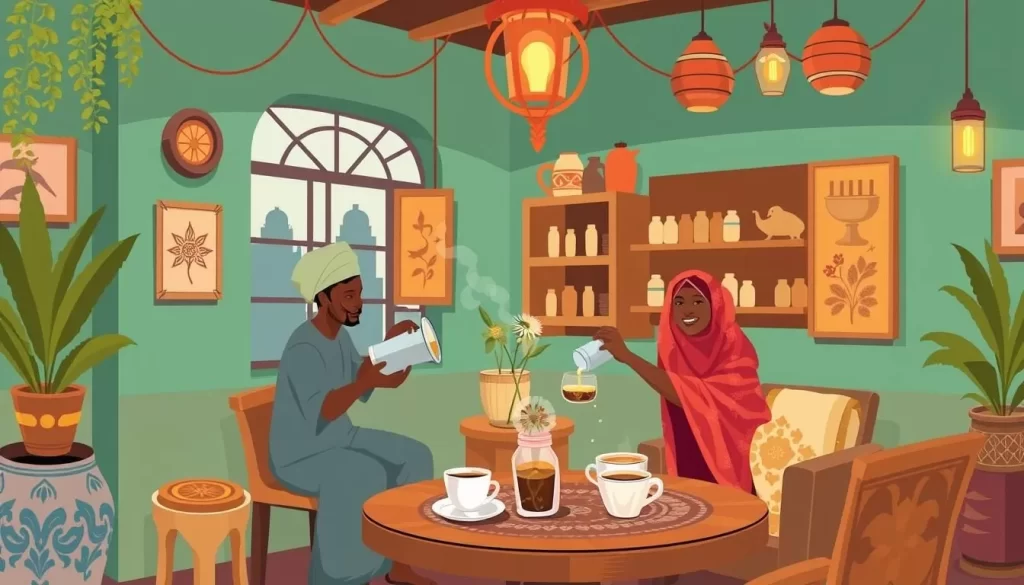
Street Food Adventures
Embark on a culinary adventure through Khartoum’s street food scene, where you can sample some of the city’s most authentic and affordable dining experiences. Start your day with a traditional Sudanese breakfast of falafel sandwiches and sweet tea from street vendors.
Try tamiya, shawarma, and other local specialties, and don’t miss the refreshing tamarind and hibiscus drinks (karkade) sold by street vendors. Visiting the food sections of Khartoum’s markets is also a must, where you can sample fresh dates, local cheeses, and seasonal fruits directly from producers.
Practical Tips for Visiting Khartoum
To navigate Khartoum like a pro, follow these practical travel tips that will enhance your experience in this unique African city. Khartoum is considered one of the safest major cities in Africa, with a low crime rate and friendly locals.
Plan your visit during the winter months (November to February) when temperatures are more moderate. Summer temperatures can exceed 40°C (104°F), making sightseeing uncomfortable.
Choose your accommodation based on your budget, from budget-friendly options like the Khartoum Youth Hostel to mid-range hotels like KH2 Hotel. Consider camping at the Blue Nile Sailing Club for a unique experience.
Navigate the city using ride-hailing apps like Tirhal or shared minibuses (amjads) for an authentic local experience. Don’t forget to exchange money carefully and dress modestly out of respect for local customs.
The above is subject to change.
Check back often to TRAVEL.COM for the latest travel tips and deals.
